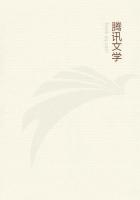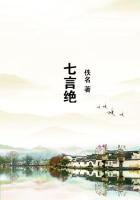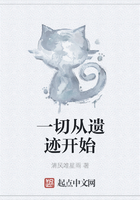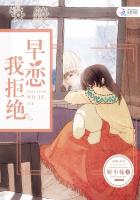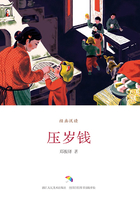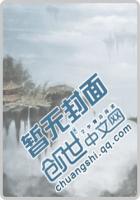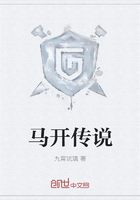The Great West, vast and rude, brought forth men also vast and rude.We pass today over parts of that matchless region, and we see the red hills and ragged mountain-fronts cut and crushed into huge indefinite shapes, to which even a small imagination may give a human or more than human form.It would almost seem that the same great hand which chiseled out these monumental forms had also laid its fingers upon the people of this region and fashioned them rude and ironlike, in harmony with the stern faces set about them.
Of all the babes of that primeval mother, the West, the cowboy was perhaps her dearest because he was her last.Some of her children lived for centuries; this one for not a triple decade before he began to be old.What was really the life of this child of the wild region of America, and what were the conditions of the experience that bore him, can never be fully known by those who have not seen the West with wide eyes--for the cowboy was simply a part of the West.He who does not understand the one can never understand the other.
If we care truly to see the cowboy as he was and seek to give our wish the dignity of a real purpose, we should study him in connection with his surroundings and in relation to his work.
Then we shall see him not as a curiosity but as a product--not as an eccentric driver of horned cattle but as a man suited to his times.
Large tracts of that domain where once the cowboy reigned supreme have been turned into farms by the irrigator's ditch or by the dry-farmer's plan.The farmer in overalls is in many instances his own stockman today.On the ranges of Arizona, Wyoming, and Texas and parts of Nevada we may find the cowboy, it is true, even today: but he is no longer the Homeric figure that once dominated the plains.In what we say as to his trade, therefore, or his fashion in the practice of it, we speak in terms of thirty or forty years ago, when wire was unknown, when the round-up still was necessary, and the cowboy's life was indeed that of the open.
By the costume we may often know the man.The cowboy's costume was harmonious with its surroundings.It was planned upon lines of such stern utility as to leave no possible thing which we may call dispensable.The typical cowboy costume could hardly be said to contain a coat and waistcoat.The heavy woolen shirt, loose and open at the neck, was the common wear at all seasons of the year excepting winter, and one has often seen cowboys in the winter-time engaged in work about the yard or corral of the ranch wearing no other cover for the upper part of the body but one or more of these heavy shirts.If the cowboy wore a coat he would wear it open and loose as much as possible.If he wore a "vest"he would wear it slouchily, hanging open or partly unbuttoned most of the time.There was a reason for this slouchy habit.The cowboy would say that the vest closely buttoned about the body would cause perspiration, so that the wearer would quickly chill upon ceasing exercise.If the wind were blowing keenly when the cowboy dismounted to sit upon the ground for dinner, he would button up his waistcoat and be warm.If it were very cold he would button up his coat also.
The cowboy's boots were of fine leather and fitted tightly, with light narrow soles, extremely small and high heels.Surely a more irrational foot-covering never was invented; yet these tight, peaked cowboy boots had a great significance and may indeed be called the insignia of a calling.There was no prouder soul on earth than the cowboy.He was proud of being a horseman and had a contempt for all human beings who walked.On foot in his tight-toed boots he was lost; but he wished it to be understood that he never was on foot.If we rode beside him and watched his seat in the big cow saddle we found that his high and narrow heels prevented the slipping forward of the foot in the stirrup, into which he jammed his feet nearly full length.If there was a fall, the cowboy's foot never hung in the stirrup.In the corral roping, afoot, his heels anchored him.So he found his little boots not so unserviceable and retained them as a matter of pride.Boots made for the cowboy trade sometimes had fancy tops of bright-colored leather.The Lone Star of Texas was not infrequent in their ornamentation.
The curious pride of the horseman extended also to his gloves.
The cowboy was very careful in the selection of his gloves.They were made of the finest buckskin, which could not be injured by wetting.Generally they were tanned white and cut with a deep cuff or gauntlet from which hung a little fringe to flutter in the wind when he rode at full speed on horseback.
The cowboy's hat was one of the typical and striking features of his costumes.It was a heavy, wide, white felt hat with a heavy leather band buckled about it.There has been no other head covering devised so suitable as the Stetson for the uses of the Plains, although high and heavy black hats have in part supplanted it today among stockmen.The boardlike felt was practically indestructible.The brim flapped a little and, in time, was turned up and perhaps held fast to the crown by a thong.The wearer might sometimes stiffen the brim by passing a thong through a series of holes pierced through the outer edge.
He could depend upon his hat in all weathers.In the rain it was an umbrella; in the sun a shield; in the winter he could tie it down about his ears with his handkerchief.
Loosely thrown about the cowboy's shirt collar was a silk kerchief.It was tied in a hard knot in front, and though it could scarcely be said to be devoted to the uses of a neck scarf, yet it was a great comfort to the back of the neck when one was riding in a hot wind.It was sure to be of some bright color, usually red.Modern would-be cowpunchers do not willingly let this old kerchief die, and right often they over-play it.For the cowboy of the "movies," however, let us register an unqualified contempt.The real range would never have been safe for him.

